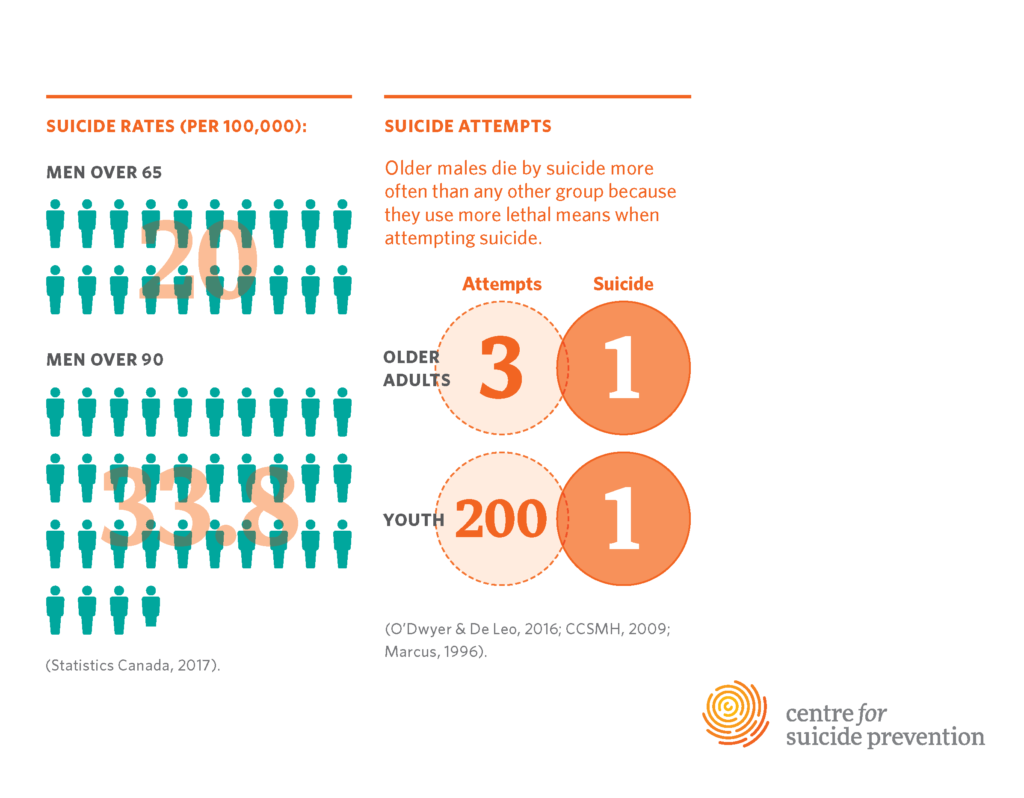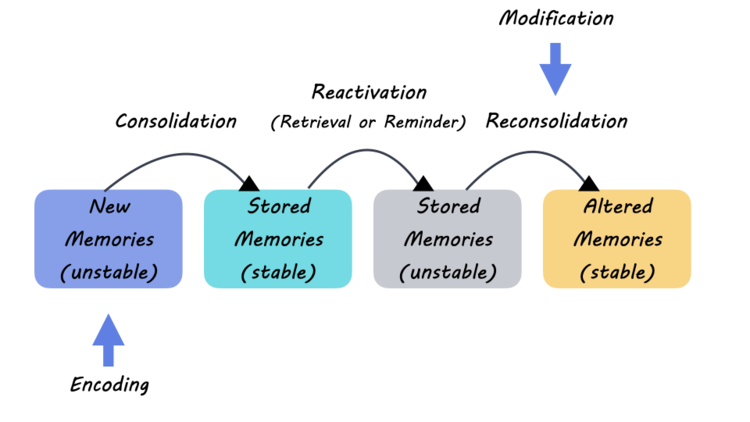Suicide prevention for older adults is a critical public health concern, as this demographic faces the highest suicide rates among any age group, particularly those aged 75 and older. Research indicates that elderly suicide rates are not declining, a stark contrast to trends seen in younger populations, which underscores the need for targeted interventions. Despite their increasing reliance on online resources for mental health information, older adults find that many suicide prevention campaigns overlook their unique needs. Geriatric mental health remains an underrepresented field, yet effective solutions are essential to address isolation and mental health issues within this community. By amplifying awareness through dedicated suicide prevention initiatives, we can help bridge this gap and provide crucial support for our elderly population.
Addressing the challenges of suicidal thoughts among seniors requires a compassionate understanding of their distinctive mental health needs. The elderly often grapple with feelings of loneliness and despair, which can exacerbate the risk of self-harm. With the rise of digital platforms, there is an urgent call for accessible online resources for seniors that prioritize their emotional and psychological well-being. By advocating for specialized suicide prevention campaigns aimed at older individuals, we can foster a supportive environment that encourages them to seek help. This approach is vital to reducing the tragic rates of elderly suicide and ensuring that our senior citizens feel valued and connected.
Understanding the Rising Suicide Rates Among Older Adults
Suicide rates among older adults, particularly those aged 75 and older, have reached alarming levels, establishing this demographic as the most vulnerable group within society. Recent studies indicate a significant uptick in suicides among this age bracket, prompting a critical examination of the social and psychological factors contributing to this trend. Factors such as increasing social isolation, chronic health conditions, and the loss of loved ones contribute to the mental health challenges faced by elderly individuals, leading to a heightened risk for suicidal ideation and attempts. Understanding these underlying causes is essential for developing effective intervention strategies to prevent suicide in older adults.
As clinicians in the geriatric mental health field have observed, many older adults express feelings of hopelessness, anxiety, and depression, which can escalate into suicidal thoughts. The alarming statistics, such as the CDC report indicating a suicide rate of 20.3 per 100,000 for adults over 75, underscore the urgency for targeted mental health resources. These statistics indicate that, unlike younger populations, older adults are increasingly becoming disenfranchised from mental health support, highlighting the need for comprehensive evaluation of geriatric mental health services.
Barriers to Mental Health Resources for Seniors
Older adults often face significant barriers when seeking mental health resources, particularly for suicide prevention. One of the primary issues is the lack of accessible online resources specifically tailored for older populations. Many well-known suicide prevention organizations focus their efforts on younger demographics, leaving a substantial void for the elderly. This discrepancy is both troubling and perplexing given the high rates of suicide among older adults, sparking discussions about the need for more inclusive outreach efforts and resource development that cater directly to the unique experiences and challenges faced by seniors.
Furthermore, systemic biases against older adults often hinder their access to necessary help. Common stereotypes that suggest older individuals are less likely to seek care or not take their mental health issues seriously can discourage seniors from pursuing the support they need. Efforts to increase awareness of mental health issues in geriatric populations, coupled with promotion of online resources specific to suicide prevention, are essential. By addressing these barriers, we can ensure that older adults receive the support and resources they require to maintain their mental health.
The Need for Targeted Suicide Prevention Campaigns
In light of the growing suicide rates among older adults, there is an increasing call for targeted suicide prevention campaigns specifically designed for this demographic. Public-facing campaigns that have proven effective for younger populations may not resonate with older adults due to varying communication preferences and technology utilization. It is essential to develop targeted strategies that acknowledge and incorporate the unique characteristics and needs of older individuals, which can improve their engagement with available resources and ultimately reduce suicide rates.
Moreover, the involvement of geriatric mental health specialists can play a significant role in shaping these campaigns. By utilizing insights from research and clinical practice, we can create outreach initiatives that speak directly to older adults, addressing issues like social isolation, mental health stigma, and the availability of supportive services. Tailored programming that utilizes traditional and digital media platforms to disseminate information about suicide prevention can empower older adults to seek help and foster a sense of community, which is vital for their mental well-being.
Improving Access to Online Resources for Seniors
Given that many older adults turn to the internet for health-related information, enhancing access to online resources specifically for seniors is imperative for effective suicide prevention. The research indicates a scarcity of easily navigable and age-appropriate resources, which can deter older adults from seeking help. Websites dedicated to mental health support must prioritize user-friendly designs, clear navigation paths, and content tailored to the interests and needs of senior users, ensuring that vital information is accessible.
In addition to user-centric design, health organizations should consider the diversity among older adults regarding their experience with technology. Many may not be digitally literate, while others might face challenges due to physical barriers affecting their ability to interact with digital content. Providing educational resources that teach older adults how to effectively use online platforms to access mental health support can enhance overall engagement. A well-informed elderly population can reduce the stigma surrounding mental health issues and create a more robust culture of care and support.
Collaboration Between Organizations for Effective Outreach
To combat the rising suicide rates among older adults, collaboration between various organizations, including healthcare providers, community groups, and public health entities, is essential. By pooling resources and expertise, these collaborations can significantly enhance outreach efforts and ensure that the message of suicide prevention reaches older adults effectively. This multi-faceted approach can facilitate the development of comprehensive programs tailored for seniors, promoting mental health wellness and potentially lowering suicide rates.
Additionally, such partnerships can foster a more substantial community support system for older adults. Engaging local organizations and stakeholders who have established relationships within the elderly community can enable better identification of at-risk individuals and encourage proactive mental health initiatives. By combining efforts, stakeholders can create a network of support that addresses the unique needs of older adults while providing avenues for accessing essential mental health resources.
The Role of Mental Health Education in Preventing Elderly Suicide
Mental health education plays a pivotal role in preventing suicide among older adults. Increasing awareness about mental health issues, particularly among caregivers, family members, and community members, can lead to earlier identification of individuals at risk. Providing comprehensive training programs that educate these individuals on the warning signs of suicidal behavior and effective communication strategies can foster an environment where older adults feel safe and supported when discussing their difficulties.
Furthermore, educational initiatives should also aim to debunk common myths surrounding mental health in older populations. Stereotypes suggesting that depression and other mental health conditions are merely a part of aging can perpetuate stigma and discourage seniors from seeking help. By promoting a culture of understanding and empathy, we can create a stronger community network that encourages open dialogue about mental health, ultimately reducing the incidence of suicidal thoughts and behaviors in older individuals.
Promoting Social Connections to Reduce Isolation
Social isolation is one of the most significant risk factors contributing to suicidal ideation among older adults. Many seniors experience loneliness due to the loss of friends or family, retirement, and mobility issues that make socializing difficult. Addressing this issue through community programs that promote social connections can play a crucial role in reducing the risk of suicide. Activities such as group therapy sessions, social clubs, and volunteering opportunities can provide older adults with a sense of belonging, purpose, and engagement.
Additionally, technology can be harnessed to create virtual connections among seniors, especially in circumstances where physical attendance is challenging. Online platforms and social media can allow older adults to connect with peers, participate in virtual events, and engage in online support groups, which can alleviate feelings of isolation. By promoting social interactions, we can create a supportive environment that significantly enhances the mental health and overall well-being of older adults.
Involving Caregivers in Suicide Prevention Efforts
Caregivers play an essential role in the mental health and well-being of older adults, making their involvement in suicide prevention efforts crucial. They often serve as the first line of defense in recognizing signs of depression or suicidal ideation in the elderly. Providing caregivers with training and resources can empower them to identify at-risk individuals and facilitate access to appropriate mental health services, thereby enhancing overall prevention strategies.
Moreover, initiatives that support caregivers themselves are vital in creating a sustainable support system. Caregivers face immense pressures and challenges, which can impact their mental health and, subsequently, their ability to provide care effectively. Implementing programs that provide respite, self-care strategies, and mental health resources for caregivers can ultimately improve the quality of care for older adults, contributing to a holistic approach to suicide prevention.
Funding and Research Needs in Geriatric Mental Health
Ongoing funding and research are critical to improving geriatric mental health services and suicide prevention efforts targeted at older adults. Despite the rising suicide rates and the unique challenges faced by this demographic, funding dedicated to late-life mental health interventions remains alarmingly low. Increasing financial support for research initiatives that focus on understanding the mental health needs of seniors and effective prevention methods is vital to facilitate meaningful changes in suicide rates among this population.
Furthermore, collaborative initiatives that include academic institutions, healthcare organizations, and governmental agencies can enhance the scope and effectiveness of these research endeavors. By aligning research agendas with the specific mental health needs of older adults, we can develop evidence-based interventions that address the nuanced aspects of geriatric mental health, ultimately leading to improved outcomes and reduced suicide rates in vulnerable seniors.
Frequently Asked Questions
What resources are available for suicide prevention for older adults?
A variety of resources exist for suicide prevention for older adults, including online platforms and helplines specifically tailored for elderly populations. These resources aim to address geriatric mental health, offering supportive services that focus on the unique challenges faced by seniors. Organizations like the National Institute of Mental Health provide information and tips for caretakers and families to help older adults in crisis.
How serious is the issue of elderly suicide rates in the United States?
Elderly suicide rates in the United States are alarmingly high, particularly among adults aged 75 and older. This age group experiences one of the highest suicide rates, estimated at 20.3 per 100,000 individuals. Factors contributing to this crisis include social isolation, health decline, and mental health challenges, emphasizing the urgent need for targeted suicide prevention campaigns.
In what ways can family members support the mental health of older adults?
Family members can play a crucial role in supporting the mental health of older adults by maintaining open lines of communication and encouraging regular check-ins. They should recognize signs of depression or suicidal thoughts and guide them toward appropriate resources for suicide prevention for older adults, including counseling and support groups.
What are some online resources for seniors concerning suicide prevention?
There are several online resources for seniors focused on suicide prevention, including the National Suicide Prevention Lifeline’s website, which offers information tailored to older adults. Additionally, state health departments and elder care organizations have online materials that address geriatric mental health issues, providing critical support and information.
Why are older adults underserved in suicide prevention efforts?
Older adults are often underserved in suicide prevention efforts due to a lack of targeted resources and systemic biases that overlook their unique needs. Research indicates that major suicide prevention campaigns traditionally do not focus on this demographic, resulting in a gap in accessible help. It highlights the necessity for dedicated initiatives aimed at improving mental health for seniors.
What steps can be taken to improve suicide prevention for older adults?
Improving suicide prevention for older adults requires developing targeted campaigns that specifically address their needs. This includes increasing awareness, enhancing accessibility of mental health resources, and providing training to healthcare providers on the nuances of geriatric mental health. Increased funding for research and community programs focused on late-life suicide prevention is also critical.
How can I recognize signs of suicidal thoughts in older adults?
Signs of suicidal thoughts in older adults may include observable withdrawal from social activities, changes in mood, sleep disturbances, and expressions of hopelessness. It’s imperative to listen to their concerns and take any mention of suicide seriously, guiding them towards mental health resources geared towards suicide prevention for older adults.
What role do public-facing suicide prevention campaigns play in helping older adults?
Public-facing suicide prevention campaigns play a vital role in raising awareness and providing crucial information about mental health resources for older adults. These campaigns can help destigmatize mental health issues and encourage seniors to seek help, ultimately reducing the overall suicide rates within this vulnerable population.
| Key Point | Details |
|---|---|
| High Risk for Suicide | Older adults, especially those aged 75 and above, exhibit the highest suicide rates compared to other age groups. |
| Lack of Resources | National suicide prevention organizations offer few resources specifically aimed at older adults. |
| Study Findings | Research from McLean Hospital reveals an urgent need for more targeted suicide prevention efforts for older adults. |
| Online Resource Imbalance | Investigations highlighted that resources for older adults are scarce and hard to locate online, despite acknowledgment of their risk. |
| Increased Suicide Rates | CDC data shows an increase in suicide rates among adults over 75, linked to factors like isolation and research underrepresentation. |
| Need for Targeted Campaigns | Experts recommend public campaigns focusing on older adult needs to enhance accessibility to resources. |
| Call for Funding | Increased funding and research are essential for developing effective late-life suicide prevention strategies. |
Summary
Suicide prevention for older adults is a critical area of concern, as they are at a heightened risk compared to younger populations. The recent study conducted by researchers at McLean Hospital sheds light on the significant resource gap affecting older adults who seek help. To effectively combat the rising suicide rates among this demographic, it is vital to develop targeted prevention strategies and accessible online resources tailored to their unique needs, ensuring that those at risk receive the support they urgently require.









